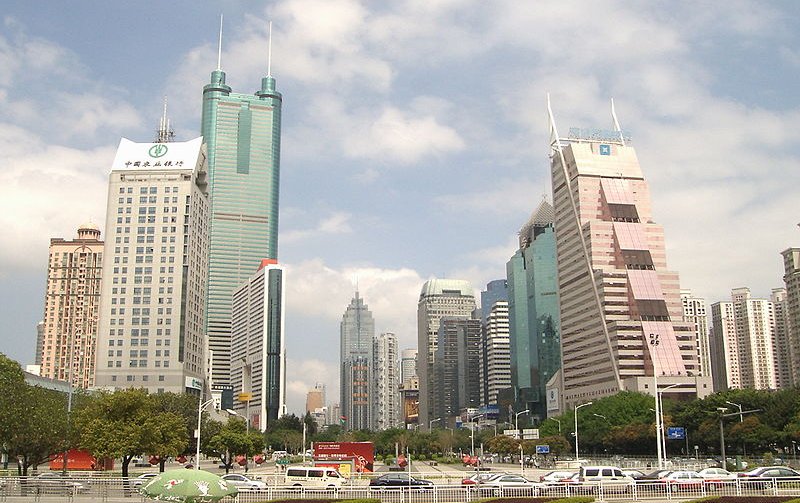 Downtown Shenzhen, China
Downtown Shenzhen, ChinaSource: https://commons.wikimedia.org/wiki/File:Sz1.JPG
Author: Chintunglee

Shenzhen (Chinese: 深圳 ) is a major city in Guangdong Province, China. It is located immediately to the north of Hong Kong. Shenzhen was the first of the many Special Economic Zones that was created under the economic liberation policies of Deng Xiaoping. The amount of direct foreign investment in Shenzhen has totalled over US$30 billion, and this has spurred the city to become one of the fastest growing in the world.
) is a major city in Guangdong Province, China. It is located immediately to the north of Hong Kong. Shenzhen was the first of the many Special Economic Zones that was created under the economic liberation policies of Deng Xiaoping. The amount of direct foreign investment in Shenzhen has totalled over US$30 billion, and this has spurred the city to become one of the fastest growing in the world.
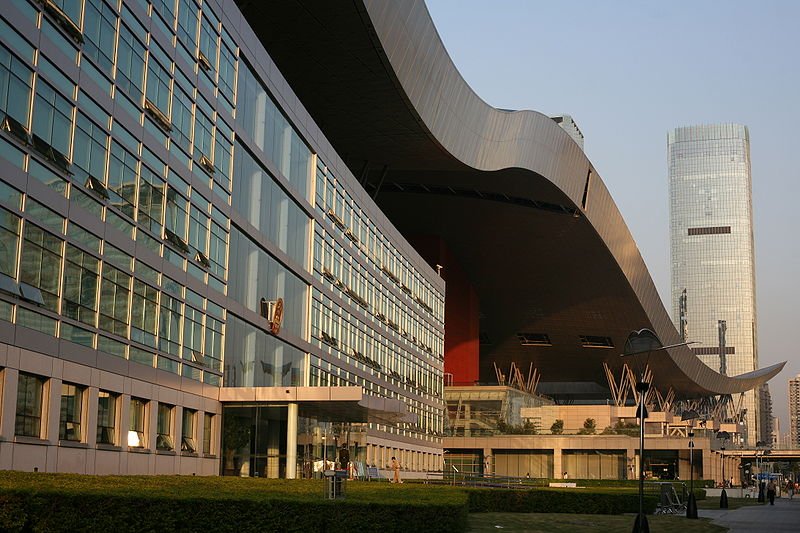 Shenzhen City Hall
Shenzhen City Hall
Author: Chintunglee

Shenzhen (Chinese: 深圳
 ) is a major city in Guangdong Province, China. It is located immediately to the north of Hong Kong. Shenzhen was the first of the many Special Economic Zones that was created under the economic liberation policies of Deng Xiaoping. The amount of direct foreign investment in Shenzhen has totalled over US$30 billion, and this has spurred the city to become one of the fastest growing in the world.
) is a major city in Guangdong Province, China. It is located immediately to the north of Hong Kong. Shenzhen was the first of the many Special Economic Zones that was created under the economic liberation policies of Deng Xiaoping. The amount of direct foreign investment in Shenzhen has totalled over US$30 billion, and this has spurred the city to become one of the fastest growing in the world. Shenzhen City Hall
Shenzhen City HallSource: https://commons.wikimedia.org/wiki/File:Shenzhen%27s_city_hall.jpg
Author: Robert Scoble

Shenzhen is the financial center for southern China. It is the home of the Shenzhen Stock Exchange. It also has the second busiest port in mainland China after Shanghai.
The name Shenzhen appeared for the first time in historical chronicles of 1410, during the Ming Dynasty. The name Shenzhen means "deep drains", in reference to the ditches that cross the rivers in the paddy fields.
Until it was singled out by Deng Xiaoping for development, Shenzhen was nothing more than a fishing village. The choice of Shenzhen has much to do with its proximity to Hong Kong. The municipality of Shenzhen has a population of 8.6 million people, as of 2007.
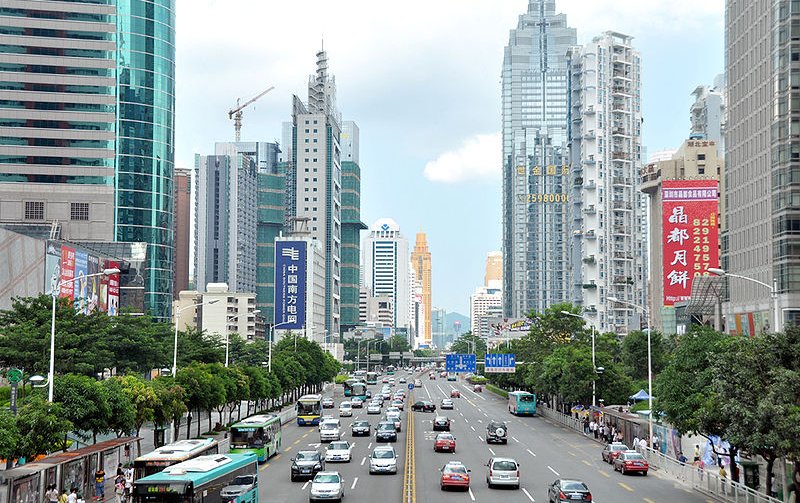 Shenzhen Skyscrapers
Shenzhen Skyscrapers
Author: Robert Scoble

Shenzhen is the financial center for southern China. It is the home of the Shenzhen Stock Exchange. It also has the second busiest port in mainland China after Shanghai.
The name Shenzhen appeared for the first time in historical chronicles of 1410, during the Ming Dynasty. The name Shenzhen means "deep drains", in reference to the ditches that cross the rivers in the paddy fields.
Until it was singled out by Deng Xiaoping for development, Shenzhen was nothing more than a fishing village. The choice of Shenzhen has much to do with its proximity to Hong Kong. The municipality of Shenzhen has a population of 8.6 million people, as of 2007.
 Shenzhen Skyscrapers
Shenzhen SkyscrapersSource: https://commons.wikimedia.org/wiki/File:Shenzhan_landmark3.jpg
Author: Mauchai

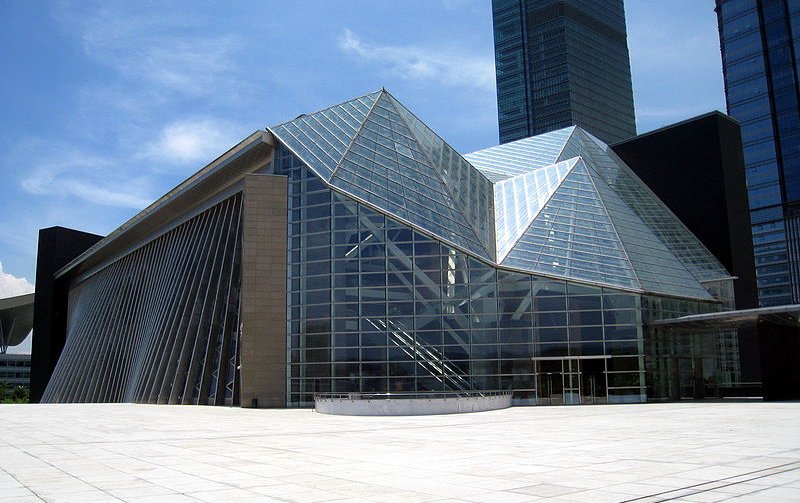 Shenzhen Library
Shenzhen Library
Author: Mauchai

Planning your trip to Shenzhen
The Shenzhen Bao'an International Airpoort is the main international gateway to Shenzhen. The airport is connected to downtown Shenzhen by a coach service. It goes to the Ke Xue Guan Metro station. The fare is ¥25.Exploring Shenzhen
Then Shenzhen Metro is the most convenient way to get about in the city. The fare ranges from ¥2 to ¥5. Tickets, in the form of plastic tokens, are bought from vending machines. If you are going to use the metro often, then get the stored-value card, which you touch on the turnstile sensor as you enter and exit the platform. The card can be purchased from the ticket window. Shenzhen Library
Shenzhen LibrarySource: https://commons.wikimedia.org/wiki/File:Shenzhen_Library_Overview.jpg
Author: WiNG

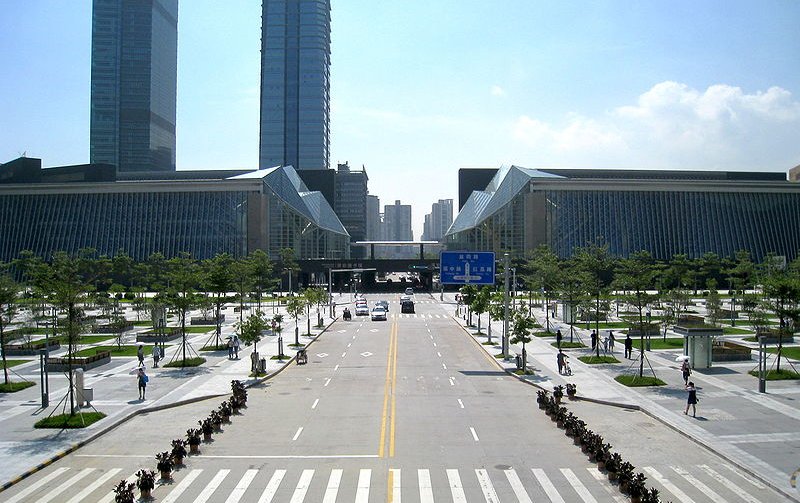 Shenzhen Library and Concert Hall
Shenzhen Library and Concert Hall
Author: WiNG

Architectural Sights of Shenzhen
The wealth generated by the booming economy has translated itself into several cutting-edge buildings in Shenzhen.- Shenzhen City Hall
A stunning piece of architecture in downtown Shenzhen. - Shenzhen Library
Architectural masterpiece of black granite and folded glass. - Shenzhen Concert Hall
A beautiful building in a glass-wrapped setting. - Shenzhen Children's Palace
Facility for children to engage in extra-curricular activities. - Window of the World
A 48,000 square meter park where the famous sights of the world are replicated in miniature. - Splendid China & Chinese Folk Culture Village
Splendid China is another park of miniatures, here of sights in China, while Chinese Folk Culture Village is a living museum with 56 houses representing different communities in China, peopled by representatives of each group showcasing their culture. - Happy Valley Theme Park
A theme park like Hong Kong Disneyland, but a lot bigger - and some say, better. - Minsk World
Military theme park on the Soviet aircraft carrier Minsk, complete with aircrafts.
Theme Parks
The tourist attractions of Shenzhen are mostly of the theme park variety, as this is a relatively new city. Shenzhen Library and Concert Hall
Shenzhen Library and Concert HallSource: https://commons.wikimedia.org/wiki/File:Shenzhen_Library_%26_Shenzhen_Shenzhen_Concert_Hall_Overview1.jpg
Author: WiNG

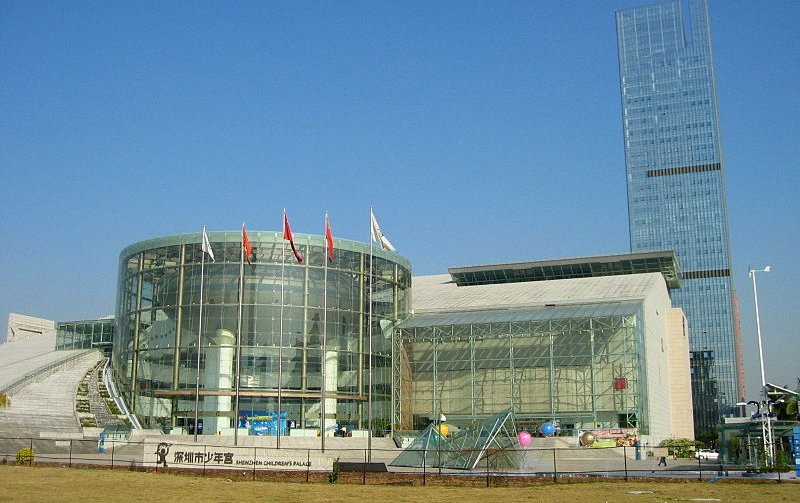 Shenzhen Children's Palace
Shenzhen Children's Palace
Author: WiNG

Nature Sights of Shenzhen
- Lianhua Mountain Park
Shenzhen's most central park. - Lake of the Immortals Botanical Gardens
Arguably the most beautiful park in Shenzhen. - Shenzhen Garden and Flower Exposition Center
Park on the site of the international garden exhibition of 2004. - Dapeng Peninsula
Nominated as one of the best beach coastlines in China. - Mangrove National Park
Marshlands which are one of China's smallest national parks. - Wutong Mountain National Park
Tallest mountain in the Pearl River Delta, popular place for hikers. - Yangtai Mountai Forest Park
Forest park in Guangdong Province around a reservoir. - Shiyan Lake Hot Spring Resort
Hot spring at the back of Yangtai Mountain.
 Shenzhen Children's Palace
Shenzhen Children's PalaceSource: https://commons.wikimedia.org/wiki/File:Shenzhen_Children_Palace.jpg
Author: WiNG

Looking for information on Penang? Use this Map of Roads in Penang to zoom in on information about Penang, brought to you road by road.

Author: WiNG

Museums and Galleries
- Shenzhen Museum
Museum housed in the futuristic Shenzhen City Hall building. - Shenzhen Art Museum
Museum showcasing local and international works of art. - Dafen Oil Painting Village
Oil painting village set in an old Hakka village. - He Xiangning Art Museum
This is the second national art museum of China. - OCT Art and Design Gallery
Gallery exhibition industrial, domestic and fashion designs of China.
Temples of Shenzhen
- Hongfa Buddhist Temple
Temple located at the park of the Lake of the Immortals. - Chiwan Tin Hau Temple
The biggest and most splendid temple to Tin Hau, the Taoist god of heaven.
Historical Sites of Shenzhen
It is surprising for many - the locals included - that there is a longer history to Shenzhen than they have expected. Apparently the area has been a stage for many historical events long before it became present-day Shenzhen.- Tomb of the Young Song Emperor
Tomb of the last emperor of the Southern Song Dynasty. - Xin'an (Nantou) Ancient City
This is the original main town of the county that encompasses the whole area that is present-day Hong Kong and Shenzhen. - Dapeng Ancient Fort
A well-preserved Ming Dynasty fort from 1394. - Crane Lake Fortified Hakka Village and Hakka Culture Museum
A glimpse at the fortified village of the Hakka people. The Crane Lake Fortified Hakka village is the biggest. - Dawanshiju Hakka Fortified Village
Another fortified village of the Hakka. - Chiwan Left Fort
Fort built to defend against British advances.
 Latest updates on Penang Travel Tips
Latest updates on Penang Travel Tips
 Map of Roads in Penang
Map of Roads in Penang
Looking for information on Penang? Use this Map of Roads in Penang to zoom in on information about Penang, brought to you road by road.
Copyright © 2003-2025 Timothy Tye. All Rights Reserved.

 Go Back
Go Back